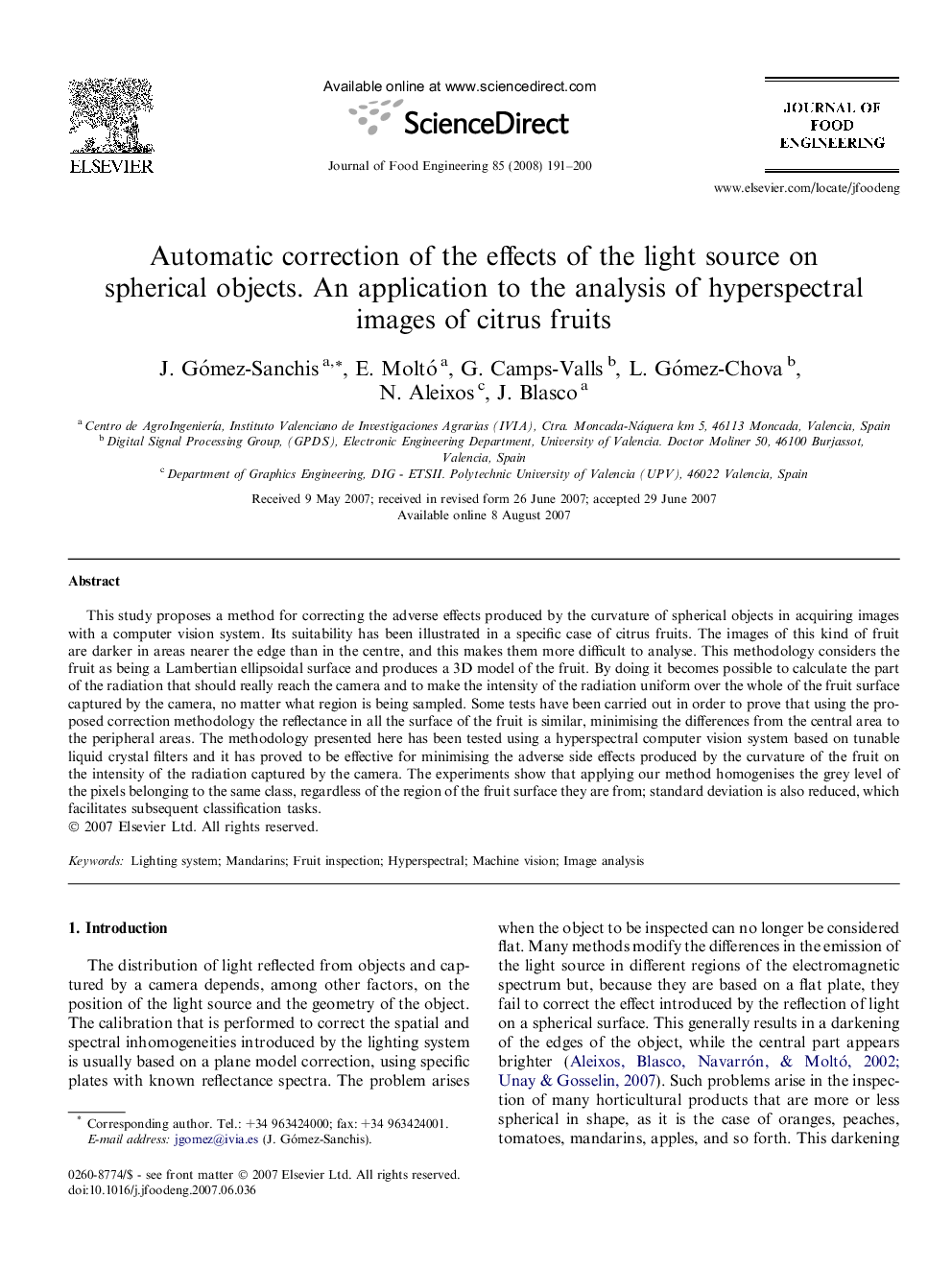| Article ID | Journal | Published Year | Pages | File Type |
|---|---|---|---|---|
| 225852 | Journal of Food Engineering | 2008 | 10 Pages |
This study proposes a method for correcting the adverse effects produced by the curvature of spherical objects in acquiring images with a computer vision system. Its suitability has been illustrated in a specific case of citrus fruits. The images of this kind of fruit are darker in areas nearer the edge than in the centre, and this makes them more difficult to analyse. This methodology considers the fruit as being a Lambertian ellipsoidal surface and produces a 3D model of the fruit. By doing it becomes possible to calculate the part of the radiation that should really reach the camera and to make the intensity of the radiation uniform over the whole of the fruit surface captured by the camera, no matter what region is being sampled. Some tests have been carried out in order to prove that using the proposed correction methodology the reflectance in all the surface of the fruit is similar, minimising the differences from the central area to the peripheral areas. The methodology presented here has been tested using a hyperspectral computer vision system based on tunable liquid crystal filters and it has proved to be effective for minimising the adverse side effects produced by the curvature of the fruit on the intensity of the radiation captured by the camera. The experiments show that applying our method homogenises the grey level of the pixels belonging to the same class, regardless of the region of the fruit surface they are from; standard deviation is also reduced, which facilitates subsequent classification tasks.
